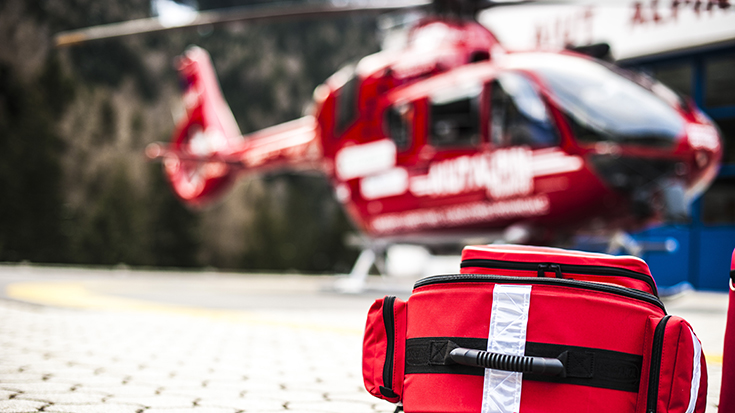
Respiratory care is an exciting profession, whether working at the bedside in a community hospital or serving as an industry sales consultant.
But “exciting” is, of course, a relative term. For example, in respiratory care, most people would point to transport as the most exciting setting we have to offer.
Is transport something you’ve ever thought of pursuing? Olivia Kaullen, MHA, RRT, RRT-NPS, CPHQ, chair of the AARC’s Surface & Air Transport Section, offers some great insight into the area and what you will want to consider before hopping in the back of an ambulance or boarding a medical airplane or helicopter.
How would you describe the transport setting to RTs who have never worked in the area? What types of jobs does the specialty encompass?
Whew! This setting can look like just about anything from bedside in a level four NICU to roadside with an ejected passenger. If you can dream up a place where someone may need medical care (anywhere!) I can almost guarantee a transport RT has been there.
What people don’t often notice is what the setting looks like for the transport crews behind the scenes. It’s more than just patient care. It’s discussions at your home base with a Peer Support Team after a difficult call, it’s late-night stops for fuel, and crossing your fingers the convenience store is open for food. It’s staying at a hotel in another state when the weather rolls in and you can’t make it home.
What are the educational, credentialing, and experience requirements to grow a successful career in this area of the profession?
All teams are different. Some teams require an associate’s degree, but a lot are moving toward a bachelor’s. Most require about three years of experience in an ICU and an advanced credential (like an RRT-NPS) within the first year of hire. Continuing education is a big one. Not only are most RTs cross-trained with nursing, with those skills to keep up with too, but they also learn survival skills in case of a stalled vehicle or aircraft while on transport and operational safety of transport vehicles. Critical Incident Stress Management is reviewed all the time.
How does working in transport differ from practicing traditional respiratory care in a hospital setting?
There are days that look a lot like my bedside care days. For example, there are often times when a child is requiring continuous albuterol and needs to be transferred to a
children’s facility for that specialty care. We work with the referral facility’s nursing, physicians, lab, x-ray, etc., to make sure the patient is getting the best care they can.
What looks different is when we continue that care in an ambulance or in flight. There are a lot of things to consider, including equipment that’s rated safe for flight, ensuring you have enough medication and oxygen for transport, and how the patient’s support system will travel to their destination if they can’t come with you.
What opportunities for career advancement does the setting offer?
All kinds! For example, my current role is quality and safety coordinator. Sometimes I transport as an RT, and sometimes I work with pilots and mechanics on ensuring the best way to secure equipment for flight. My department consists of several different disciplines and has co-directors that both happen to be respiratory therapists!
What are the biggest challenges and the biggest rewards of working in transport and why?
They are one and the same. For me, it’s that we rarely get to watch our patients get better since we don’t get to spend much time in the ICUs. But sometimes our patients come back to visit, and that’s the best part of our job. Kids are always excited to see the big blue ambulance they rode in and how it lights up!
What are the top 3-4 things you think an RT should consider before making a move into the transport setting, and why?
- Work- and home-life balance. In this career, you cannot commit to being somewhere on time right after your shift. You may be stuck across the country when it’s time for you to go home.
- Do you get nauseous? It’s not something you can just power through! If you get car sick, consider the most stressful health care situation you’ve been in and ask yourself if you could do it while nauseous.
- Can you advocate strongly and effectively for your patient? Remember, you are the eyes and ears for the physician you call back and get orders from.
- Do you want to have the coolest job ever? Consider transport!
Learn more about transport respiratory care by joining the AARC’s Surface & Air Transport Section. Members there will be happy to answer your questions about entering this area of respiratory care.





